Project EFI Stroker
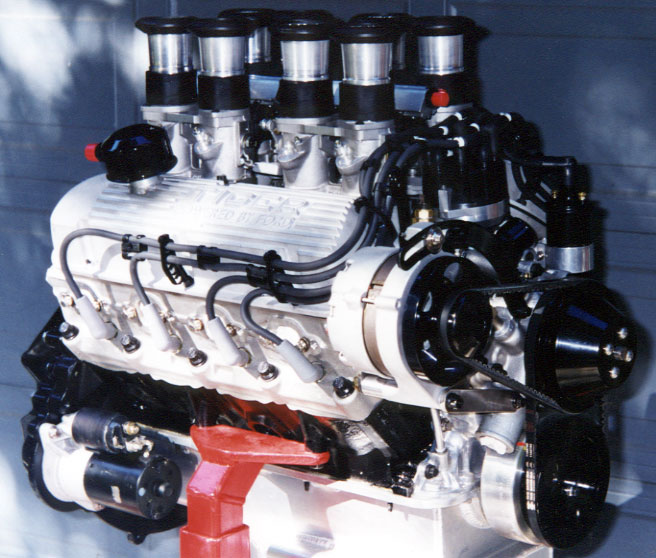
An Article by Ken Mattice
May, 2001
Page 2
The high torque starter, pictured above, is not required, as the engine has such low compression. Also, Speed-Pro retards the timing to 5 degrees when starting which also eases the strain on the starter. The small starters seem to live longer because they are not so close to the headers and stay cooler.
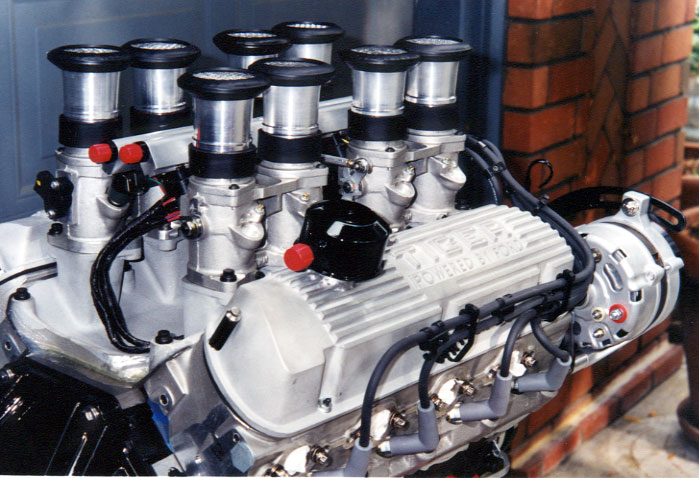
The fuel injection and engine management system was purchased as a complete assembly from Fodge Engineering. The individual runner FI is a real visual piece for small block Ford enthusiasts, as it’s all built on a Weber Carb intake manifold (w/provision for thermostat), with the (8) individual throttle bodies sitting on each intake port, just like the Webers. The injectors themselves ride low on the inboard side of the throttle bodies with two fuel rails over the top of the injectors in the center of the manifold. There are several options for air cleaners, but with the spun aluminum velocity stacks, the whole setup could at first glance be mistaken for Webers. Well, at least from a distance. The injectors are sequentially fired, and are somewhat "smart" in that they adjust the fuel mixture within a 5% range, depending on sensing data acquired by the "brain". The engine management system is a fully programmable (read tunable) unit made by Federal Mogul. This unit was designed to sense and act upon as many as 100 separate data streams. We will use only a few inputs such as throttle position, temperature, vacuum, RPM, starting cycle, etc.
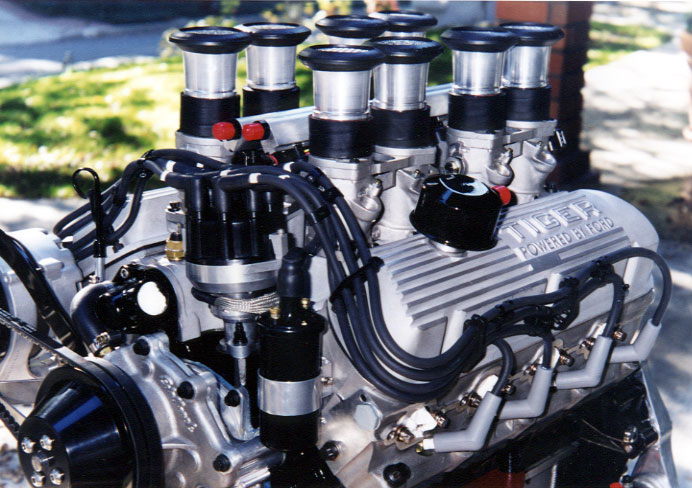
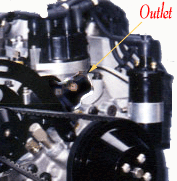 You may observe, in these views (above and right), and others, the thermostat housing water outlet from the intake manifold is, uncharacteristically, pointed left. Other observations may include the dual belt drive, a very nice dual sheave water pump pulley, and a hydraulic balancer. Well, the top hose expands a lot under load, and it is pretty close to the fan. Yes, I can still use a fan. The Ford 8600 and the Derale 17015 both seem to fit well, even with the thicker aluminum radiators. While the clearances look good with the hose when parked, under load it's another story. Don't need the fan "eating" the hose. A Parts Table is at the end of the article, and includes the new Edelbrock pump #8842 the high flow retro-fit for the Ford HiPo according to Edelbrock. This pump was modified by Dale Akuzewski, who machined off the excess casting forward of the main impeller bearing, machine the hub flat and then press it back on the shaft all the way "down" to the correct stand-off. The excess shaft protruding forward is simply cut off.
You may observe, in these views (above and right), and others, the thermostat housing water outlet from the intake manifold is, uncharacteristically, pointed left. Other observations may include the dual belt drive, a very nice dual sheave water pump pulley, and a hydraulic balancer. Well, the top hose expands a lot under load, and it is pretty close to the fan. Yes, I can still use a fan. The Ford 8600 and the Derale 17015 both seem to fit well, even with the thicker aluminum radiators. While the clearances look good with the hose when parked, under load it's another story. Don't need the fan "eating" the hose. A Parts Table is at the end of the article, and includes the new Edelbrock pump #8842 the high flow retro-fit for the Ford HiPo according to Edelbrock. This pump was modified by Dale Akuzewski, who machined off the excess casting forward of the main impeller bearing, machine the hub flat and then press it back on the shaft all the way "down" to the correct stand-off. The excess shaft protruding forward is simply cut off.
The whole concept of the engine was to combine the modern fuel and electronic management system with a very low compression ratio, and as many cubic inches (364 in this case) as could be mustered out of the 8.2" short deck block. In short, we were trying to maximize most of what is good about today’s stroker motors. And, the low 8.44 to 1 compression ratio allows the use of ordinary pump gasoline, but at the same time allows far more ignition timing than would otherwise be possible with higher compression. Pistons were custom made 4.125" dished units manufactured by JE. I am questioning if the lower compression will help with the cooling equation, especially since this block has Siamese bores. This is a pretty radical departure from the high compression, big cam, big carb, formula most of us grew up with. Especially, the low compression ratio paired with a performance camshaft.
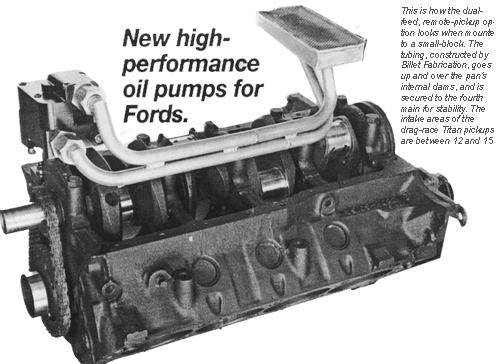
In keeping with making the engine somewhat unique and interesting, a Titan Speed Engineering billet geo-rotor oil pump with dual pickups was utilized. This pump originally developed for sprint cars and dragsters, lives in a Billet Fabrications custom aluminum oil pan, complete with trap doors, baffles, scrapers, and 9 quarts of Kendall Racing 20-50 wt. With all this and 4-bolt main bearing caps, the sump is a busy place indeed.
Take a look at our Regional Clubs section for more information and tips.
 **
**



 You may observe, in these views (above and right), and others, the thermostat housing water outlet from the intake manifold is, uncharacteristically, pointed left. Other observations may include the dual belt drive, a very nice dual sheave water pump pulley, and a hydraulic balancer. Well, the top hose expands a lot under load, and it is pretty close to the fan. Yes, I can still use a fan. The Ford 8600 and the Derale 17015 both seem to fit well, even with the thicker aluminum radiators. While the clearances look good with the hose when parked, under load it's another story. Don't need the fan "eating" the hose. A Parts Table is at the end of the article, and includes the new Edelbrock pump #8842 the high flow retro-fit for the Ford HiPo according to Edelbrock. This pump was modified by Dale Akuzewski, who machined off the excess casting forward of the main impeller bearing, machine the hub flat and then press it back on the shaft all the way "down" to the correct stand-off. The excess shaft protruding forward is simply cut off.
You may observe, in these views (above and right), and others, the thermostat housing water outlet from the intake manifold is, uncharacteristically, pointed left. Other observations may include the dual belt drive, a very nice dual sheave water pump pulley, and a hydraulic balancer. Well, the top hose expands a lot under load, and it is pretty close to the fan. Yes, I can still use a fan. The Ford 8600 and the Derale 17015 both seem to fit well, even with the thicker aluminum radiators. While the clearances look good with the hose when parked, under load it's another story. Don't need the fan "eating" the hose. A Parts Table is at the end of the article, and includes the new Edelbrock pump #8842 the high flow retro-fit for the Ford HiPo according to Edelbrock. This pump was modified by Dale Akuzewski, who machined off the excess casting forward of the main impeller bearing, machine the hub flat and then press it back on the shaft all the way "down" to the correct stand-off. The excess shaft protruding forward is simply cut off.